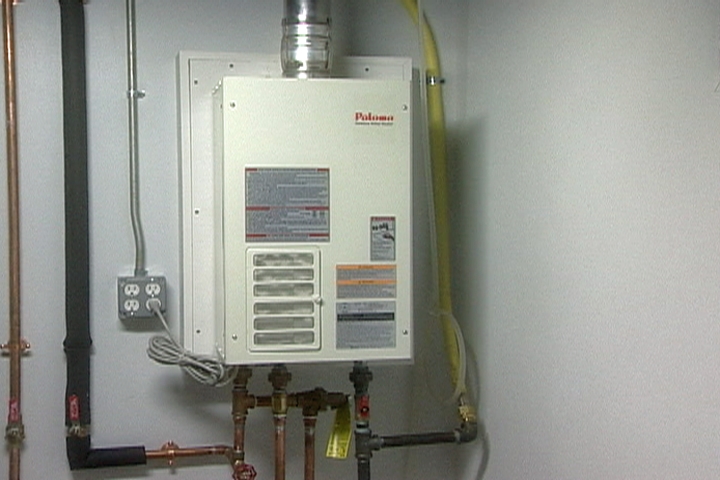Professional Advice for Caring for Your Home's Hot Water SystemUseful Techniques for Caring for Your Home's Hot Water System
Professional Advice for Caring for Your Home's Hot Water SystemUseful Techniques for Caring for Your Home's Hot Water System
Blog Article
This post underneath relating to What Kind of Maintenance Do Water Heaters Need? is extremely fascinating. You should take a look.

Warm water is important for day-to-day comfort, whether it's for a revitalizing shower or washing recipes. To ensure your hot water system runs effectively and lasts longer, normal maintenance is essential. This article supplies sensible ideas and insights on just how to preserve your home's warm water system to prevent disruptions and pricey repairs.
Intro
Keeping your home's hot water system could appear difficult, but with a couple of simple actions, you can ensure it runs efficiently for years ahead. This guide covers whatever from recognizing your hot water system to do it yourself maintenance ideas and knowing when to call expert aid.
Significance of Keeping Your Hot Water System
Normal maintenance not only expands the lifespan of your warm water system but additionally guarantees it operates successfully. Overlooking upkeep can cause decreased effectiveness, greater energy bills, and also premature failing of the system.
Signs Your Warm Water System Needs Maintenance
Recognizing when your hot water system requires interest can prevent significant problems. Look out for signs such as irregular water temperature level, weird noises from the heating system, or rustic water.
Purging the Hot Water Heater
Flushing your water heater eliminates debris build-up, improving efficiency and extending its life.
Monitoring and Changing Anode Rods
Anode poles stop corrosion inside the tank. Checking and replacing them when broken is important.
Facility Problems Needing Specialist Assistance
Examples consist of significant leaks, electrical issues, or if your hot water heater is continually underperforming.
Routine Professional Upkeep Perks
Expert maintenance can consist of comprehensive assessments, tune-ups, and guaranteeing conformity with safety and security requirements.
Checking and Changing Temperature Level Settings
Adjusting the temperature level settings ensures optimum performance and safety and security.
DIY Tips for Upkeep
You can carry out several upkeep tasks on your own to maintain your warm water system in top problem.
Checking for Leaks
Frequently inspect pipelines and connections for leakages, as these can cause water damage and greater expenses.
Understanding Your Warm Water System
Before diving into maintenance tasks, it's handy to comprehend the fundamental elements of your warm water system. Commonly, this consists of the water heater itself, pipelines, anode rods, and temperature controls.
Month-to-month Maintenance Tasks
Normal monthly checks can aid capture minor concerns prior to they escalate.
Examining Pressure Relief Valves
Examining the stress safety valve guarantees it operates properly and avoids excessive stress buildup.
Shielding Pipes
Protecting hot water pipes minimizes warmth loss and can save energy.
When to Call an Expert
While do it yourself maintenance is advantageous, some concerns require specialist knowledge.
Verdict
Routine maintenance of your home's hot water system is necessary for efficiency, long life, and cost financial savings. By adhering to these tips and understanding when to seek expert assistance, you can make sure a trustworthy supply of hot water without unanticipated interruptions.
Water Heater Maintenance Tips
Test the TPR Valve
Shut off the power and the cold-water supply valve. Place a bucket under the pipe connected to the temperature-pressure-release (TPR) valve on the top or side of the tank. (This valve opens if the tank pressure gets too high.) Lift the valve’s tab to let some water out, then let go. If water keeps flowing, drain the tank partway, unscrew the old valve with a pipe wrench, and install a new one. Check the Anode Rod
Put a hose to the tank’s drain cock and let out a few gallons of water. Now fit a 1 1/16-inch socket onto the rod’s hex head on top of the heater (or under its top plate) and unscrew the rod. If it’s less than ½ inch thick or coated with calcium, buy a new one, wrap its threads with Teflon tape, put it back in the tank, and tighten securely. Use this segmented rod if headroom above the tank is limited. Drain the Tank and Wash Out Sediment
Drain the remaining water in the tank into the bucket, then stir up the sediment on the tank’s bottom by briefly opening the cold-water supply valve. Drain and repeat until clean water comes out of the hose. Close the drain cock, refill the tank, and turn its power back on. Adjust the Temperature
Find the temperature dial on the side of the tank and unscrew its cover. Adjust the dial to 120 degrees using a flathead screwdriver. For every 10 degrees the temperature is lowered, you can expect to save up to 5 percent in energy costs. Turn the water heater off or the thermostat down to its lowest setting if you plan to be away from home for more than three days. Insulate the Pipes
Buy some self-sticking 3/8-inch-thick foam pipe insulation that matches the pipes’ diameter. Slide the foam over the hot-and cold-water pipes as far as you can reach. Insulating the cold-water pipe prevents condensation in summer. Peel the tape and squeeze the insulation closed. If the pipe is 6 inches or less from the flue, cover it with 1-inch-thick unfaced fiberglass pipe wrap. https://www.thisoldhouse.com/plumbing/21016402/how-to-maintain-a-water-heater

We had been made aware of that write-up about How to Maintain Your Water Heater & Prolong its Life through a friend on a different website. Be sure to set aside a second to share this page if you enjoyed reading it. We cherish your readership.
Click Here Report this page